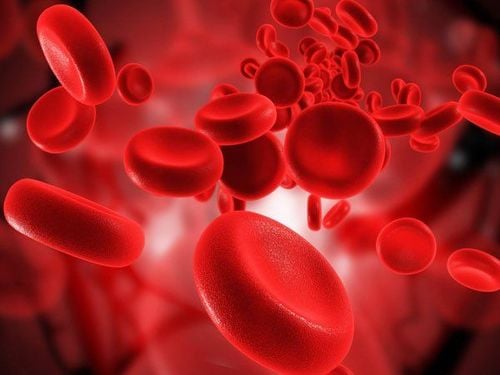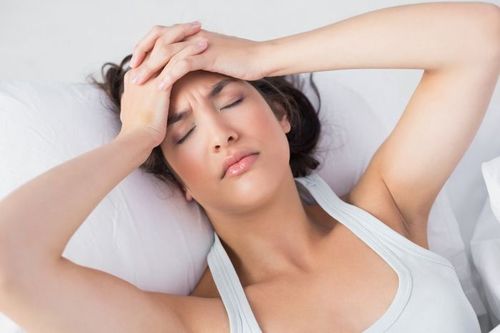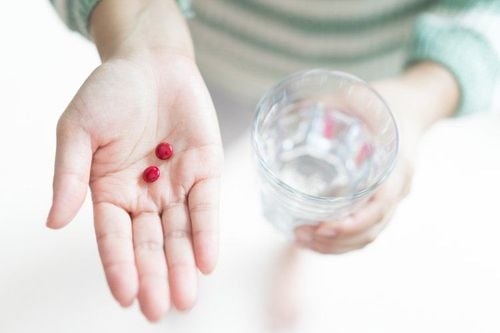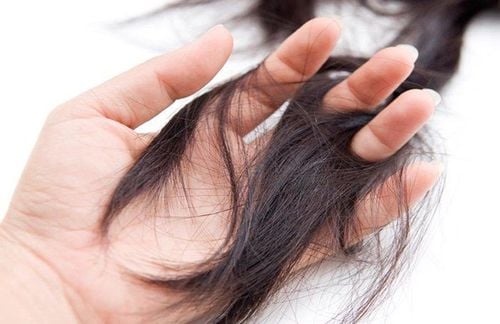This is an automatically translated article.
Iron deficiency anemia can be improved by adjusting the diet. Eating certain green, dark leafy vegetables, seafood, beans, nuts, and seeds can help a person boost iron levels in the body. In addition, iron supplements can be beneficial for people who are not getting enough iron from their diets. However, it is necessary to have the guidance and prescription of a doctor because otherwise it will cause medical problems such as iron poisoning.
1. Anemia and possible risks
Iron deficiency anemia, a condition in which the blood lacks healthy red blood cells. Red blood cells carry out the function of carrying oxygen to the body's tissues. Iron deficiency anemia is caused by not having enough iron in the body. Without enough iron in your blood, your body can't produce enough of the substance in red blood cells needed to help them carry oxygen (hemoglobin). The resulting iron deficiency anemia can make you tired and short of breath.
You can usually correct iron deficiency anemia with dietary modifications or iron supplements. Sometimes additional tests or treatments are needed for iron-deficiency anemia, especially if your doctor suspects that you're bleeding internally.
Some causes of iron deficiency anemia include:
Blood loss . The blood in the body normally contains iron in red blood cells. So if you lose blood, at the same time you will lose an amount of iron proportional to your blood. Women who menstruate in heavy monthly cycles are at risk for iron-deficiency anemia because they lose blood during their periods. Iron deficiency in the diet. If you consume too few foods that contain iron, over time your body can become iron deficient. Inability to absorb iron. Iron from food is mainly absorbed into the bloodstream in your small intestine. Intestinal disorders, which include related conditions such as celiac disease, affect the gut's ability to absorb nutrients from digested food and can lead to iron-deficiency anemia. Pregnancy. During pregnancy if you do not take an iron supplement, iron deficiency anemia occurs in many pregnant women because their iron stores are sometimes insufficient to service their own increased blood volume as well as hemoglobin supply. for the developing fetus.

Thiếu máu trong thai kỳ sẽ làm ảnh hưởng tới quá trình phát triển của thai nhi
People who may be at increased risk of iron deficiency anemia:
Women. Because women often experience blood loss during their periods, women in general are at higher risk of iron-deficiency anemia. Infants and children. Infants, especially those with low birth weight, malnourished or premature infants, not getting enough iron from breast milk or formula can be one of the risk factors for iron deficiency. Therefore, children still need extra iron during growth. Vegetarians. Vegetarians and non-meat eaters may have a higher risk of developing iron-deficiency anemia than those using a diet rich in iron-rich foods along with active ingredients. enhance the absorption of iron for the body. Regular blood donors. People who regularly donate blood may be at increased risk of iron-deficiency anemia because donating blood can deplete iron stores.
2. Recommended Daily Iron Content
The Experts Recommended Daily Iron (RDA) level depends on a person's age and sex. Children under 6 months of age need only 0.27 milligrams (mg) of iron per day, while men aged 19–50 years need 8 mg per day and women of the same age will need about 18 mg of iron per day. day. During pregnancy, a woman should increase her daily iron intake to 27 mg. People with iron-deficiency anemia need a significant boost and need 150–200 mg of iron per day.
3. Foods rich in iron
What do people with anemia eat? Many foods are rich in iron. We can see how easy it is to combine these foods to create delicious, nutritious, iron-fortified meals.
Fruits and vegetables
Watercress kale and other varieties Spinach Dandelion greens Citrus fruits Red and yellow peppers Broccoli Some dark green vegetables also contain oxalates, which can inhibit inhibit iron absorption. Instead of only using plant-based foods such as vegetables, we can consult a doctor or direct to iron supplementation from many different sources.
Nuts
Pumpkin seeds Cashews Pistachios Hemp seeds Pine nuts Sunflower seeds Meat and fish
Beef Sheep venison Liver Shellfish
Oysters Shrimp Sardines Salmon Salmon Fish Perch Cod black dots Dairy products
Fresh milk Yogurt Cheese Legumes
Chickpeas Green beans Black eyed peas Chickpeas Black peas Lima beans In addition, you can choose from fortified cereals iron, bread products, orange juice, rice and pasta.

Đậu là một trong những thực phẩm tốt cho người thiếu máu
Foods to avoid
The following foods can interfere with iron absorption:
Tea and coffee Milk and some dairy products Whole grains Foods that contain tannin compounds, such as: grapes, corn, and sorghum Foods rich in gluten, such as pasta and other products made with wheat, barley, rye, or oats Foods that contain phytate compounds or acids phytic acid, such as brown rice and whole wheat products Foods that contain oxalic acid compounds, such as peanuts, parsley, and chocolate
4. Some tips to get more iron in your diet
The best way to help a person add iron to their diet is to eat plenty of iron-rich foods. However, the following activities can be the cause of maximal reduction of a person's iron intake:
Limit tea or coffee with meals Limit intake of calcium-rich foods along with iron-rich foods Eat Iron-rich foods along with foods rich in vitamin C help enhance iron absorption into the body. Cooking in a cast iron pan Cooks food in less time If a person has tried changing their diet and their iron levels are still low, they should talk to a doctor or dietitian to There are instructions and indications for iron supplements to be taken orally. Doctors often recommend choosing supplements that contain iron salts such as ferrous fumarate, ferrous gluconate or ferrous sulfate. All of these indications contain 15–106 mg of elemental iron in tablet or oral solution form.
Please dial HOTLINE for more information or register for an appointment HERE. Download MyVinmec app to make appointments faster and to manage your bookings easily.
References: medlineplus.gov, mayoclinic.org












